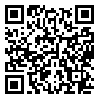1. Barquilha G, Uchida M, Santos V, Moura N, Lambertucci R, Hatanaka E, et al. Characterization Of The Effects Of One Maximal Repetition Test On Muscle Injury And Inflammation Markers. WebmedCentral Physiology 2011; 2(3): WMC001717.
2. Wernbom M, Augustsson J, Raastad T. Ischemic strength training: a low‐load alternative to heavy resistance exercise? Scandinavian J Med Sci Sports 2008; 18(4): 401-16.
3. Mohammadi Zia F, Dabidi Roshan V, Kanemati H. Effect of vitamin E supplementation on changes of NO, LDH, and plasma CPK disabled men looking for a bout of resistance exercise 2009; 35-46. ]Persian[
4. Holm L, Reitelseder S, Pedersen TG, Doessing S, Petersen SG, Flyvbjerg A, et al. Changes in muscle size and MHC composition in response to resistance exercise with heavy and light loading intensity. J app physio 2008; 105(5): 1454-61.
5. Kawada S. What phenomena do occur in blood flow-restricted muscle? Inter J KAATSU Training Res 2005; 1(2): 37-44.
6. Hosseini kakhk A, Zemand P, Haghighi A. Comparing the two types of hormonal responses to resistance training with and without restriction of blood flow 2015; 7)3): 391-405. ]Persian[
7. Tartibian B, Azadpor N. Effect of exercise on inflammatory markers and muscle damage young men Ghyrvrzshkar. MJLH the Sci Human Movement 2008; (1): 33-42. [Persian]
8. Uchida MC, Bacurau RF, Navarro F, Pontes Jr FL, Tessuti VD, Moreau RL, et al. Alteration of testosterone: cortisol ratio induced by resistance training in women. Revista Brasileira de Med do Esporte 2004; 10(3):
9. 165-68.
10. Chiaradia E, Avellini L, Rueca F, Spaterna A, Porciello F, Antonioni M, et al. Physical exercise, oxidative stress and muscle damage in racehorses. Comparative Biochemistry and Physio Part B: Biochemistry and Molecular Bio 1998; 119(4): 833-36.
11. O'halloran JF. The Hypertrophic Effects of Practical Vascular Blood Flow Restriction Training. Graduate Theses and Dissertations 2014.
12. Mathieu-Daudé F, Lafay B, Touzet O, Lelièvre J, Parrado F, Bosseno MF, Rojas AM, et al. Exploring the FL-160-CRP gene family through sequence variability of the complement regulatory protein (CRP) expressed by the trypomastigote stage of Trypanosoma cruzi. Infection, Genetics and Evolution 2008; 8(3): 258-66.
13. Razeghi E, Parkhideh S, Ahmadi F, Khashayar P. Serum CRP levels in pre-dialysis patients. Ren Fail 2008; 30(2): 193-98.
14. Mir E, Atarzadeh Hosseini SR, Mir Saeeidi M. Hejazi/ C-reactive protein, interleukin-6 and lipid biomarkers changes in sedentary middle-aged men after resistance exercise. Sabzevar Univ Med Sci 2014; 12:
16. Hojat SH, Atashk Goli MA. Effect of Omega-3 fatty acid supplementation on inflammatory marker CRP and the impact of cellular damage indices serum after a single bout of resistance exercise in young male handball players. 2012; 1-13. [Persian]
17. Gaeeni A, SHeikholeslami vatani D, Ashrafi helen J, Mogharnesi M. Effects of Short-term and long-term exercise three types of speed, endurance and a combination of lactate dehydrogenase, creatine kinase and plasma malondialdehyde in rats. 2010; 3(8): 5-20. [Persian]
18. Mohebbi H, Rahmani niya F, Arab mimeni A, Marandi M. The impact of periodic training and the rate of lactate (La) and the activity of lactate dehydrogenase (LDH) Blood Nrnzhad Wistar rats. 2015; 12(4): 37-42.
19. Clarkson PM, Thompson HS. Antioxidants: what role do they play in physical activity and health? American J Clinic nutrition 2000; 72(2): 637s-46s.
20. Levinger I, Goodman C, Peake J, Garnham A, Hare DL, Jerums G, et al. Inflammation, hepatic enzymes and resistance training in individuals with metabolic risk factors. Diabetic medicine 20091; 26(3): 220-27.
21. Choung BY, Byun SJ, Suh JG, Kim TY. Extracellular superoxide dismutase tissue distribution and the patterns of superoxide dismutase mRNA expression following ultraviolet irradiation on mouse skin. Experimental dermatology 2004; 13(11): 691-99.
22. Williams CA, Kronfeld DS, Hess TM, Saker KE, Waldron JN, Crandell KM, et al. Antioxidant supplementation and subsequent oxidative stress of horses during an 80-km endurance race. J animal Sci 2004; 82(2): 588-94.
23. Ramezanpor MR, Hejazi M, Hosseinnezhad M. Comparison marker of inflammation markers HS-CRP, triglyceride, LDL-c and HDL-c in middle-aged women active and non-active. Vaccine-preventable infectious diseases Res Center, Mashhad Univ Med Sci 2013; 93-8. ]Persian[
24. Safarzadeh A, Talebi Gorkani E. The effects of progressive resistance training on serum levels of inflammatory markers in vaspin and some male rats. 2012; 1(45). ]Persian[
25. MATSUSE H, SHIBA N, UMEZU Y, NAGO T, MAEDA T, TAGAWA Y, et al. Effects of a hybrid exercise on the activities of myogenic enzymes in plasma. Kurume Med J 2006; 53(3/4): 47-51.
26. Saito I, Yonemasu K, Inami F. Association of body mass index, body fat, and weight gain with inflammation markers among rural residents in Japan. Circulation J 2003; 67(4): 323-29.
27. Akbarnezhad A, Sori R, Dokhtbigdeli M, Siyah M. Compare the effect of continuous and intermittent exercise on inflammatory markers General (CRP and serum fibrinogen) obese young women. 2013; 5(4): 21-33. ]Persian[
28. Akbarpor M. The effects of resistance training on serum levels of adipokines and inflammatory markers of cardiovascular disease in obese men. 2013; 1-10. ]Persian[
29. Alizadeh H, Daryanosh F, Koshki jahromi M. Investigation of ChangesIndices of muscle damage in Syrian male mice after eight weeks of aerobic training and omega-3 supplementation. 2011; 77-94. ]Persian[
30. Arazi H, Ebrahimi M, Hosseini K. The effects of anabolic steroids on blood CRP body buildersz. 2011; 4(3): 9-43. ]Persian[
31. Andrzejewsk M, Chmura J. The influence of individualizing physical loads on speed, creatine kinase activity and lactate dehydrogenase in football players. Bio sport 2008; 25)2(: 177.
32. Namni F, Kashef M, Lari A. Effect heating on the relationship between CK and LDH female athletes in recovery. Olympic 2004; 4(22): 99-107. ]Persian[






